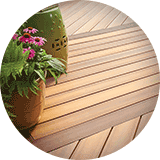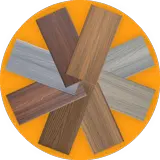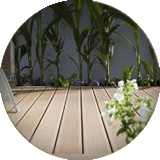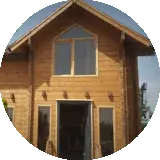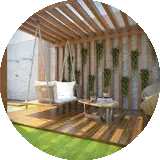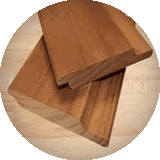This paper presents the optimization of Van Wood plastic wood (WPC) composites made from industrial residues of pine sawdust, high density polyethylene (HDPE) and maleic anhydride bonded polyethylene (PE-g-MA).
Vanwood wood plastics are specially designed for the production of facades, floors, pools, pavilions, roof gardens, etc., so the right combination of material properties related to resistance to various weather conditions, with mechanical performance. There is a unique property in Van Wood end products.
To view the implemented Van Wood projects, click on the link below:
sample projects
The optimization of the composites began with a complete description of the raw materials and the mixtures were prepared after analyzing the effect of the concentration of pine sawdust in the polymer matrix, with variable values of the coupling agent.Torque rheometry was used to determine the appropriate viscosity for extrusion processing.

Compounds with optimal content of pine sawdust and additives were identified using SEM, FTIR, DSC-TGA, tensile test, measurement of water contact angle and water absorption capacity and resistance to UV rays.This makes it possible to determine the relevant microstructure, chemical interactions, thermal stability, mechanical properties, surface wettability and swelling capacity.

To view Plast wood production certificate, click on the following link:
gavahinameh
Plast wood profiles (WPC) are defined as wood-containing composite materials (in various forms) and thermoplastic materials.These materials are from a relatively new family.

Composite materials, in which a natural or filler fibers (such as wood flour / fibers, knauf fibers, witnesses, sisal, etc.) are mixed with thermoplastics such as polyethylene (PE), polypropylene (PP), PVC (vinyl chloride),(PVC) etc. Compared to traditional synthetic fillers, natural fibers are available.(Low density, less abrasion, lower cost and they are renewable and degradable).

In the manufacture of WPC, pristine plastics such as high and low density polyethylene (HDPE and LDPE), PP and PVC are commonly used. In the case of virgin plastics, any recycled plastic that melts and can be processed below the wood degradation temperature.

To view Wood Plast articles, click on the link below:
https://www.wpc.ir/en/articles/

(Lignocellulosic fillers) (200 °C) are usually suitable for the production of WPC plast wood. Plastic waste is one of the main components of global municipal solid waste and a promising raw material “Plast WPC wood source” (thanks to high daily production and low cost). The use of recycled plastic to produce WPC plastic wood has been studied by a number of authors.
To view comprehensive information about Plast wood, click on the link below:
https://www.wpc.ir/en/articles/
The inevitable use of plastic and wood waste in van wood plastics seems to be promising today.
however, technology is evolving that promises to be used.
Preliminary research at the USDA Forest Service, Forest Products Laboratory (FPL). shows that recycled plastics such as polyethylene, polypropylene or polyethylene terephthalate can be combined with wood fiber scrap to strengthen it.
Click on the link below to view Van Wood projects

https://www.wpc.ir/en/sample-projects/
Also, click on the link below to know the price of Plast Van Wood
https://www.wpc.ir/en/wood-plastic-price-list/
Phone Call:
0938360380
02126753345


